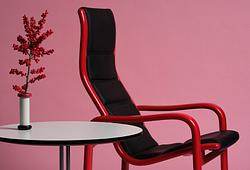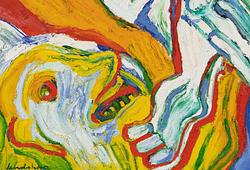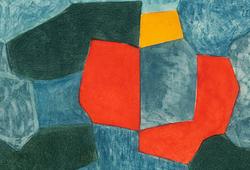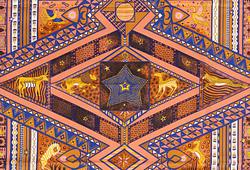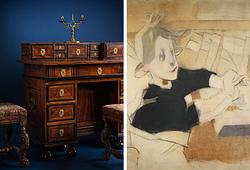Albert Edelfelt
Study for "Portrait of Princess Marie Amélie Françoise Hélène of Danmark, née princess of Orléans (1865-1909)"
Signed Albert Edelfelt. Executed in Copenhagen in April-May 1894. Pastel 109 x 64 cm.
Provenance
Crown Equerry Julius Krag-Juel-Vind-Frijs (bequeathed by Princess Marie of Denmark, 1909); Niels Krag-Juel-Vind-Frijs (by inheritance, 1933); by descent.
Exhibitions
(Possibly) Edelfelt's exhibition in Helsinki, February 1902, no. 4; Konstföreningen, Åbo, March 1902, cat no 4.
Literature
"Små Konstböcker. Edelfelt", p. 37; Bertel Hintze, "Albert Edelfelt. Del II. 1888-1905", 1944, mentioned pp. 143-144 and illustrated p. 140; Bertel Hintze, "Albert Edelfelt. Del III. Oljemålningar, pasteller, akvareller, grafiska arbeten m.m. Beskrivande förteckning", 1942, listed in the catalogue p. 143, no. 695 (possibly with erroneous provenance); Rakel Kallio and Douglas Sivén, "Albert Edelfelt", 2004, pp. 174-175.
More information
Princess Marie d'Orléans (Marie Amélie Françoise Hélène; 13 January 1865 – 4 December 1909) was a French princess by birth and a Danish princess by marriage to Prince Valdemar. She was politically active by the standards of her day.
Marie was the eldest child of Robert, duke of Chartres, and his wife, Princess Francoise d’Orléans. Her father was the second son of Ferdinand Philippe, Duke of Orléans, and Duchess Helena of Mecklenburg-Schwerin. Born during the reign in France of her family's rival, Napoléon III, she grew up in England, where her family had moved in 1848. She moved to France with her family after the fall of Napoleon in 1871. She defined herself as "une bourgeoise".
After obtaining papal consent, Marie married Prince Valdemar of Denmark, the youngest son of King Christian IX of Denmark, on 20 October 1885 in a civil ceremony in Paris and again in a religious ceremony in the Château d’Eu two days later.
Marie was described as impulsive, witty, and energetic, and introduced a more relaxed style to the stiff Danish court. She never fully learned to speak Danish. The marriage was friendly. She gave her children a free upbringing, and her artistic taste and Bohemian habits dominated her household. She was informal, not snobbish, believed in social equality, expressed her own opinions, and performed her ceremonial duties in an unconventional manner. In 1896, she wrote to Herman Bang: "I believe that a person, regardless of her position, should be herself".
She liked both to ride and to drive and was known for her elegance. She was the official protector of the fire brigade and let herself be photographed in a fire brigade uniform, which was caricatured, and as a support to her spouse's career as a marine, she had an anchor tattooed on her upper arm. She once said regarding complaints about her unconventional manners: "Let them complain, I am just as happy nevertheless".
She had asked the permission of the court to leave the house without a lady-in-waiting, and she had mainly spent her time with artists. She painted and photographed and was a student of Otto Bache and Frants Henningsen. She participated in the exhibitions at Charlottenborg in 1889, 1901 and 1902 and was a member of the Danish Arts Academy.
She refused to obey the expectation on royal women to stay away from politics. In 1886, Valdemar declined the throne of Bulgaria with her consent. She belonged to the political left and participated in convincing the king to agree to the reforms of 1901, which led to an appointment of a Venstre government, and the de facto introduction of parliamentarism. In 1902 she rejected the idea of offering the Danish West Indies to the United States. She also saw to the interests of France: she was credited by the French press with having influenced the Franco-Russian alliance in 1894 and the peace in the French-German Colonial conflict over Morocco in 1905. She was a popular person in Denmark.
Artist
Albert Edelfelt is considered one of Finland's greatest artists of the 19th century. After studying in Antwerp and Paris, he settled in France, where he received several exhibition medals and was honored with the Legion of Honour, notably for the famous portrait of Pasteur. He was also summoned by Alexander III to St. Petersburg to portray the Tsar's children. Edelfelt often returned to themes from Finnish history, such as his illustrations for 'The Tales of Ensign Stål.'
Edelfelt's works display an artistic breadth that ranges from everyday life in the Finnish archipelago to prestigious society portraits and historical paintings. In his depictions of everyday life, he managed to merge traditional academic painting with the new techniques of plein air painting, which achieved great success in France. The painting 'The Funeral of a Child' was awarded a third-class medal at the annual Salon in Paris in 1880, marking the most significant international success for Finnish painting at the time.
Albert Edelfelt is primarily represented in Ateneum in Helsinki, but also in the National Museum in Stockholm, as well as museums in Copenhagen, Luxembourg, and Paris.
Read more



